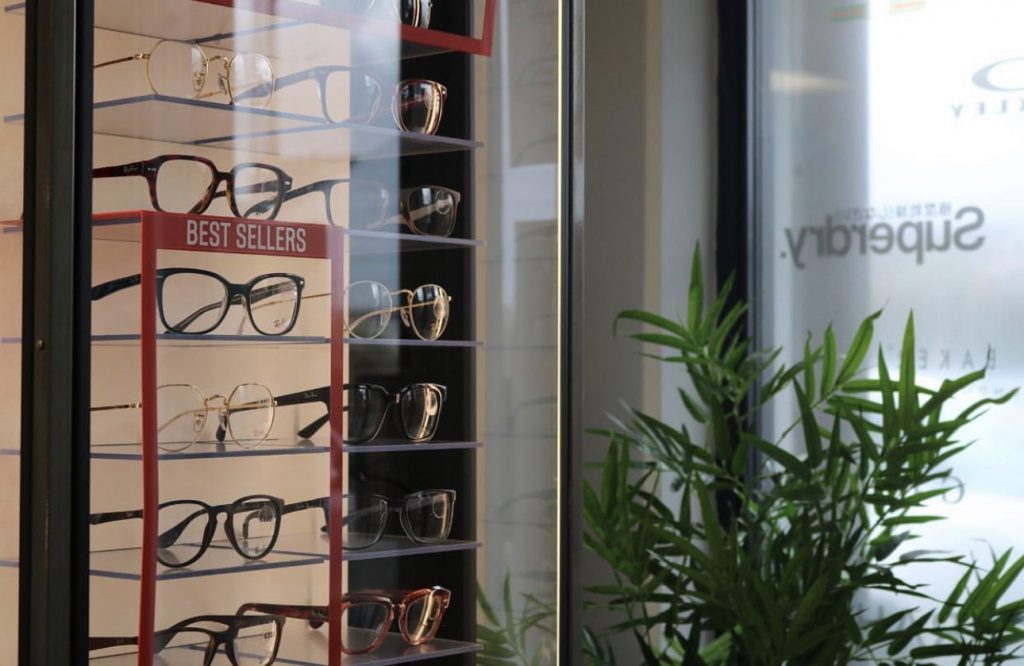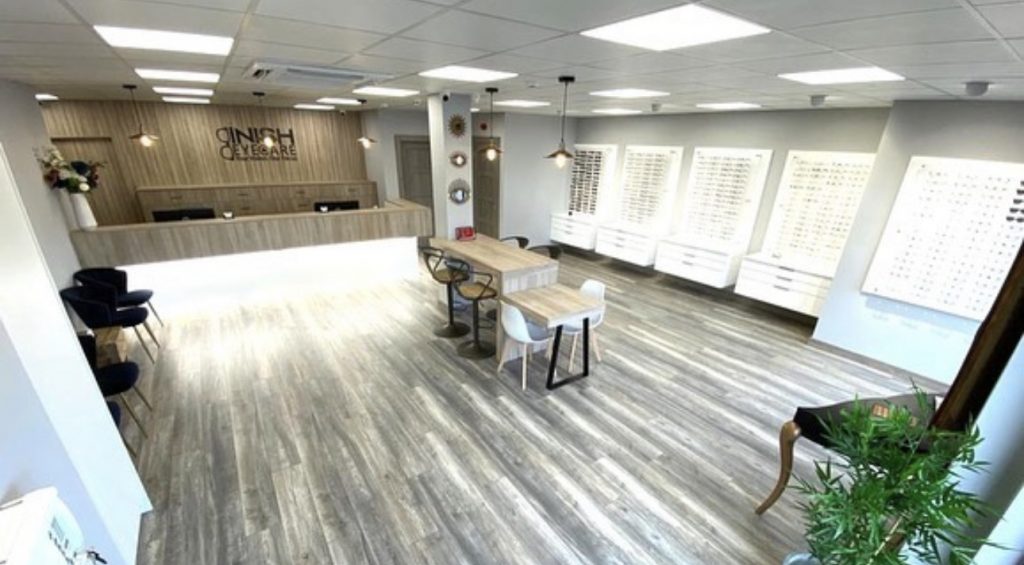Work Experience Self-Reflection Pie

Source: Unsplash
You Will Need;
- 1 cup of creative juices
- An array of feelings, accumulated from your work placement experiences
- Gibb’s Reflective Cycle (1988)
- A willingness to learn from your experiences
Method;
Self-Reflection Pie is a fantastic choice for the student who wants to learn from everything they do but knows that “the only right answers are ones that are honest, true to yourself, and supported by reflection and critical thinking” (Waitley xv). This recipe deals with my experiences so far in my work placement as a social media manager and content creator for a local opticians in my home county of Donegal. I will use “Gibb’s Reflective Cycle” (Qtd. in Jasper 60) as a tried-and-tested method of self-reflection. Self-reflection is nutritious for your brain; strengthening your understanding of yourself as an individual and a professional, whilst providing you with useful knowledge of your temperament, strengths and weaknesses that will enable you to work more efficiently going forward.
Sounds delicious- right?

Step One: Description
The first step of baking a self-reflection pie with the Gibb’s Reflective Cycle is to identify ‘what happened’. Lay it all out on the table.
As a content creator and social media manager for Inish Eyecare Buncrana, I am not only working as a creative individual but I must think strategically about how to attract an audience, get them to engage with my content and subsequently encourage them to bring their custom to the business. Don’t get me wrong, I love my role; from staging photos of stock to scheduling posts, but one day a couple of weeks ago I noticed I had hit a massive creative wall. I don’t know where it came from, but to my annoyance it wasn’t as simple as shrugging it off and moving on. So far I’ve been really focusing on social media strategies for the business and I developed a plan for clean, uniform and regular Instagram posts. However, this particular afternoon as I looked at the newsfeed I’d created, I thought to myself “Huh, it doesn’t exactly look how I thought it would”.

I suddenly found myself having doubts about my judgement and how well I executed my plan. After some consideration, I figured a problem shared is a problem halved so I brought my concerns to my supervisor. I explained the situation and asked if she, and my other colleagues, would like to have their say in the types of content I develop for social media going forward. My supervisor reassured me that she and the others really admired the content I had been producing, but they liked the suggestion of collaborating with me on suggestions for content.
Step Two: Feelings
You can’t make an omelette a pie without breaking a few eggs, isn’t that how the saying goes? Well similarly, you can’t really learn about yourself as a person without tapping into your feelings and emotions. Despite what toxic masculinity and outdated societal codes tell you; you can talk about your feelings. Heck, you should talk about your feelings.

As is evident from my explanation above, the main feeling associated with this instance for me was doubt. At the time I thought I was in the process of becoming a failure; I had just been handed this role with a lot of trust and faith and I felt like I didn’t do it justice at all. Looking back now, I can see how I was probably spiralling a little in those moments- the fear of the unknown was causing me to be very hard on myself. I felt confused too and worst of all I was afraid to voice my concerns at first because I thought this might tarnish my integrity and spark doubt from others in my ability. Although it doesn’t sound like a huge deal now, I did feel quite hopeless in the moment. It makes sense to me that I panicked in this situation, though. In the last couple years I’ve realised I overthink quite a bit, often to my own demise. Overthinking is something I think most of us are guilty of now and again, sometimes my low self confidence lets me take this trait to the max though.
Despite these initial negative emotions, I thankfully felt a great deal of relief when I opened up to my supervisor. It was a confidence boost to hear that she thinks I am doing well. I was proud of myself for being vulnerable, it really paid off. I have to say, ever since I had that conversation with my supervisor I feel more inspired, productive and respected. I still have lots of work to do on my self-confidence, but this really was a big step in the right direction for me.
Step Three: Evaluation
Doesn’t it feel great to have all those bottled up thoughts off your chest? Now it’s time to evaluate the overall experience, looking at the positives and negatives of what happened.
Even though the situation came to a satisfactory end, there’s so much more I can learn about myself and the world of work here, in fact that’s precisely what is so useful about Gibb’s Reflection Cycle. At the time I was so caught up thinking that the situation was negative, I completely dismissed any possibility that there may be positives to draw from it. So let’s address what was ‘bad’; I stalled my progress on my workload when I was having doubts, which left more work piled up to do afterwards. Before I reached out for advice I thought I was being given too much free-reign and responsibility to hold on my own. I remember thinking it felt like I was in charge of myself and I was really struggling with this.
It wasn’t until I read The Handbook of Work-Based Learning I realised that my position at work experience shares a lot of similarities with a technique called “self managed learning (SML)” (Cunningham 88). By reading into the benefits of self managed learning, I could identify some positives of the situation. Cunningham suggests that SML can “enable[s] people to develop into a new role which the organization was requiring of that department” (91). That’s when it hit me; I didn’t have direct guidance because there are no other content creators or social media managers in this business. I didn’t have to feel like I was doing something wrong- I was actually paving the way of something completely new!
Step Four: Analysis
They say everything happens for a reason and Step Four of this process encourages you to consider why this has happened. Ask yourself “So, how can my understanding of what happened here help me in the future?”
By reflecting on this experience I realised something that I never had before; I haven’t been accepted to fulfil the role of social media manager for no reason, I have been accepted because I possess the technical and creative skills to do so. My employer trusts my judgement and creative process, so I should too. My work placement is unique in the sense that the business I work for is not directly related to the creative industry; it is the job that I carry out there that is. Therefore, when it comes to content creation perhaps some of my colleagues might even look up to me as this is not something they are familiar with. Christine Fanthome reminds work placement students to “think of it from your employer’s point of view – if a worker is keen and takes pride in the work (s)he does, the product is likely to have a better finish” (51). My passion for social media and creativity drive me to carry out the work the best that I possibly can. If I wanted more specialised guidance in this career, maybe I should have looked for a placement in a media-specific company, however I think the autonomy I have in this placement will strengthen my confidence as an individual and a professional enormously.



Step Five: Conclusion
Getting hungry? Don’t worry, we are almost at the last step. Now is a good time to reach a solid conclusion regarding your situation. Since the best pies are usually sweet, I am going to keep my conclusion short and sweet;

Now that I understand social media management and content creation are relatively new roles in the employment sector, I expect and accept that there isn’t always going to be a great deal of guidance for me like there may be in longer-established professions. Despite this, I now know confidence in my ability and determination to do well will get me very far.
Step Six: Action Plan

I hope you remembered to preheat your oven, because now it is time to cook up an action plan out of everything we have just prepared and combined. For the foundations of my plan, I turn to the words of Hanoch McCarty;
“It’s not who you are that holds you back, it’s who you think you’re not- Hanoch McCarty”
(Qtd. in Hudson)
If something like this rose again, I would definitely remind myself that I am in a certain professional position because I am capable of it. WheneverI find myself thinking I’m not cut out for the work in front of me I will remind myself of the three years I have spent at university studying for the creative industry. If I still felt the need to ask a colleague or supervisor for their opinion on my work, I would do so with a lot more self-assurance. After all, art is collaborative so I will happily ask for suggestions but I have promised myself not to put myself down in the process of doing so again.
Bon Appétit! Try this recipe for yourself and share it among your friends- you never know how much you could learn!
By Síofra Harkin

Works Cited (MLA)
Chilton, Andy. “Flat lay Photography of Mug on Brown Wooden Chopping Board”, Unsplash, www.unsplash.com/photos/flat-lay-photography-of-mug-on-brown-wooden-chopping-board-0JFveX0c778, d.o.i. 11th Nov. 2023.
Cunningham, Ian, et al. “Self Managed Learning”, The Handbook of Work Based Learning, Gower Publishing Ltd., 2004. pp. 88-94.
Dumlao, Nathan. “Brown Fried Food on Stainless Steel Plate”, Unsplash, www.unsplash.com/photos/brown-fried-food-on-stainless-steel-plate-fVFaMuOpItM, d.o.i. 12th Nov. 2023.
DuPreez, Priscilla. “Baked Apple Pie”, Unsplash, www.unsplash.com/s/photos/baked-apple-pie, d.o.i. 12th Nov. 2023.
Fanthome, Christine. “Getting the Most Out of Your Placement”, Work Placements- A Survival Guide for Students, Palgrave Macmillan, 2004. pp. 50-62.
G, Denis, et al. “Gibbs’ Reflective Cycle, Minute Tools” Expert Program Management, May, 2019. www.expertprogrammanagement.com/2019/05/gibbs-reflective-cycle/, d.o.i. 11th Nov. 2023.
Hudson, Clare. “12 Inspiring Confidence Quotes”, Thought Brick, 11th Apr. 2013, www.thoughtbrick.com/lifestyle/12-inspiring-confidence-quotes/, d.o.i. 12th Nov. 2023.
Jasper, Melanie. “Reflection and Reflective Practice”, Professional Development, Reflection and Decision-making for Nurses, John Wiley & Sons, 2011. pp. 39-78.
Sosa, Melani. “White Egg on White Surface”, Unsplash, www.unsplash.com/photos/white-egg-on-white-surface-5KYnLhwRO8Y, d.o.i. 11th Nov. 2023.
Tovar, Gabriel. “Brown Pastry on Black Pan”, Unsplash, www.unsplash.com/photos/brown-pastry-on-black-pan-b-Ap1KUdrSg, d.o.i. 12th Nov. 2023.
Waitley, Denis. “Introduction”, Psychology of Success: Maximising Fulfilment in Your Career and Life, Published by McGraw-Hill Education, seventh edition, New York, 2020. pp. xii-xvii.
One response to “Recipes for Success- Self Reflection Pie”
[…] undertaking AEL3001 Work-Based Learning. If you are coming here directly from my previous recipe Self-Reflection Pie, welcome back! If you haven’t seen my earlier recipe, why not take a […]